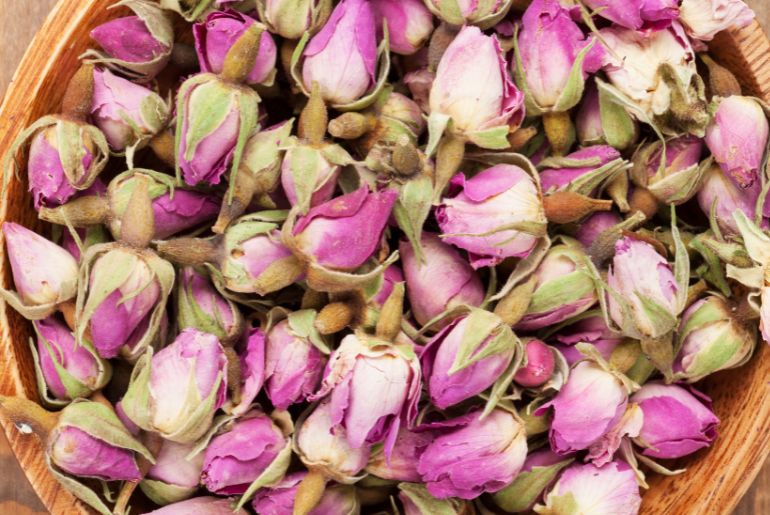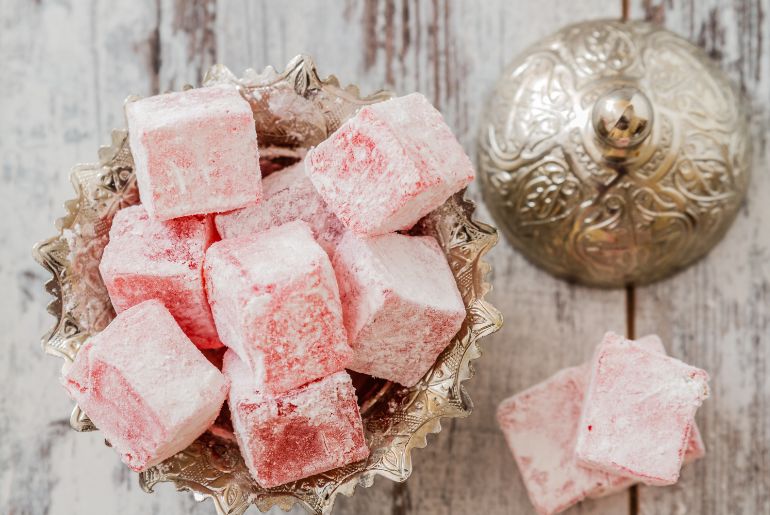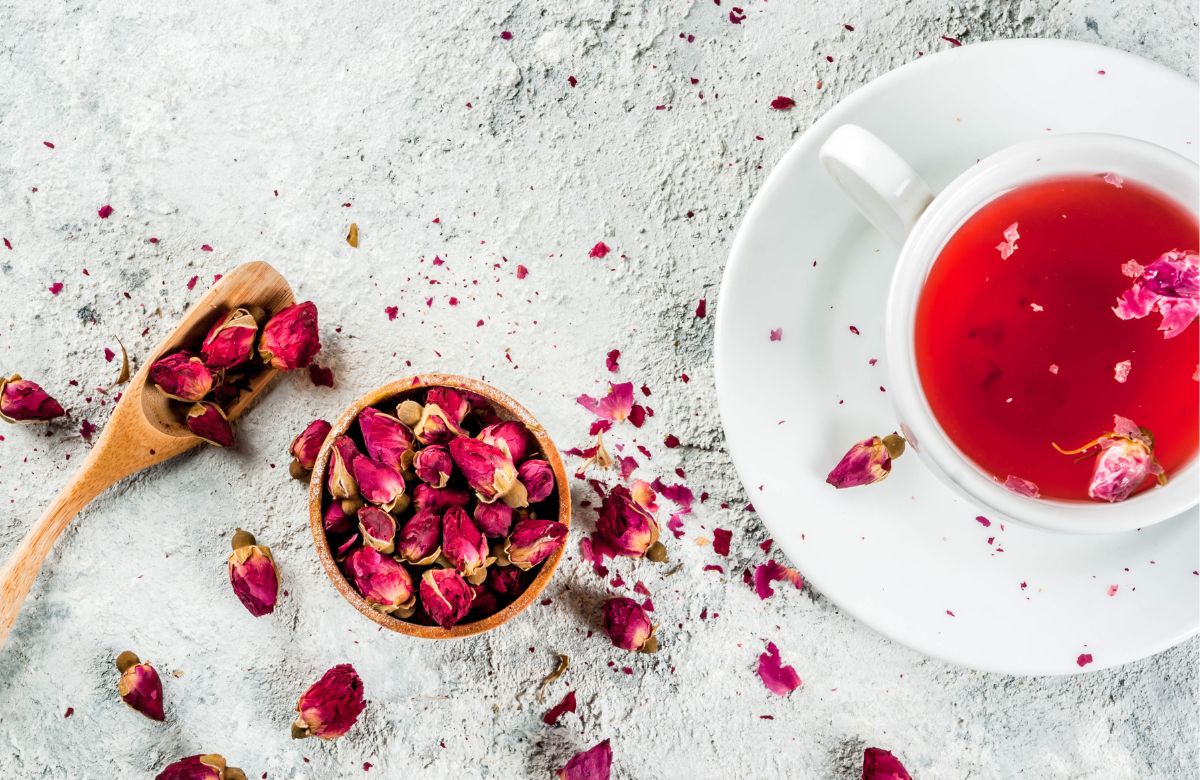From salads and desserts to beverages and even main courses, edible flowers offer a delightful twist to culinary creations. They have become increasingly popular in the culinary world, bringing beauty, fragrance, and unique flavours to a wide range of dishes. One such flower is the Damask rose (Rosa damascene). It has a captivating fragrance, aesthetic appeal and remarkable culinary uses. But, what makes this rose a sought-after ingredient in kitchens around the world?
What Makes Damask Rose A Culinary Favourite Ingredient?

Believed to have originated in ancient Persia (modern-day Iran), it quickly gained popularity and spread throughout the region. The rose’s essence and petals help to create indulgent dishes and fragrant beverages.
The Damask Rose has a rich historical significance, particularly in the Middle East and Mediterranean regions. Moreover, its association with love, beauty, and culinary delights is deeply rooted in cultural traditions. The flower also finds its references in literature, art, and even religious texts.
The Damask rose’s allure lies in its distinct and captivating flavour profile. Its petals offer a delicate sweetness, reminiscent of floral and fruity notes with hints of honey and spice. Additionally, this complex combination creates a unique taste that is both indulgent and refined. The flavour of the Damask rose is rich, aromatic, and slightly tart. This makes it an excellent choice for culinary experimentation.
Also Read: Rooh Afza, The Legendary Syrup That Has Been Quenching Our Thirst Since 1906
Some Culinary Delights To Prepare With This Rose

The culinary applications of Damask Rose are vast and varied, spanning a diverse range of cuisines and dishes. From beverages and desserts to savoury dishes and condiments, you’ll find its petals and extracts.
- Sweets and Desserts: Damask rose adds a touch of elegance to sweet treats such as cakes, pastries, cookies, and ice creams. Rose water and rose syrup made from Damask roses are key ingredients in Middle Eastern delicacies. Turkish delight, baklava, and rose-flavoured milk puddings have this rose-infused.
- Beverages: Rose-infused beverages are popular in many cultures. The rose petals help to brew fragrant herbal teas or infused them into lemonades and iced teas. It brings a refreshing floral twist.
- Jams: The petals make for delightful spreads, jams, and preserves. The natural pectin content helps create a luscious and aromatic preserve that pairs well with bread, scones, and cheese.
- Aromatic condiments: The petals make for cooking rose sugar. Or they are infused into honey, creating aromatic sweeteners. These are then drizzled over desserts, fruit salads, or even used in baking.
Whether it is used in sweets, beverages, savoury dishes, or condiments, the Damask rose brings a touch of elegance and sophistication to every culinary creation it graces.
Cover image credits: Canva
First Published: June 15, 2023 4:02 PM



